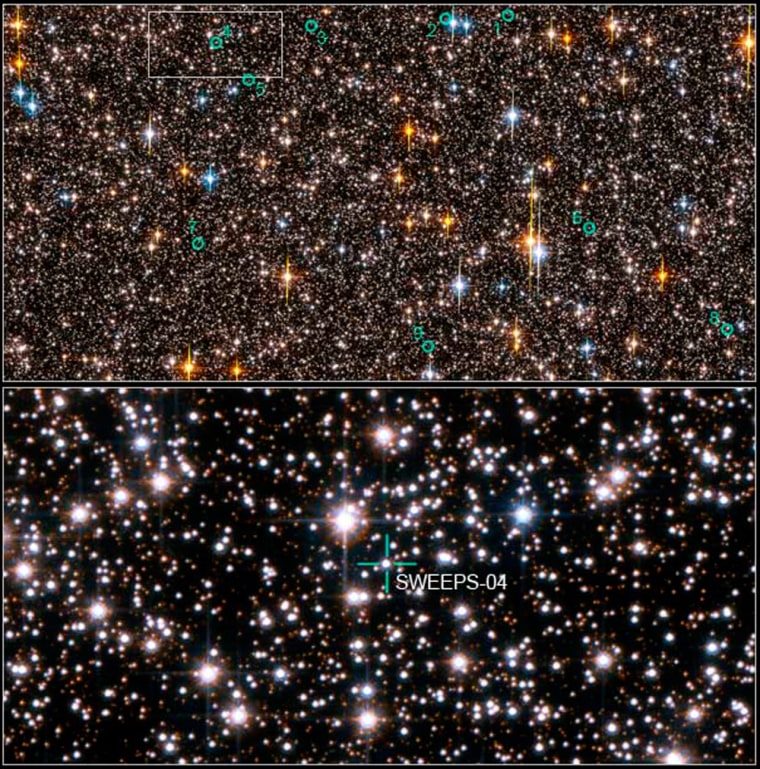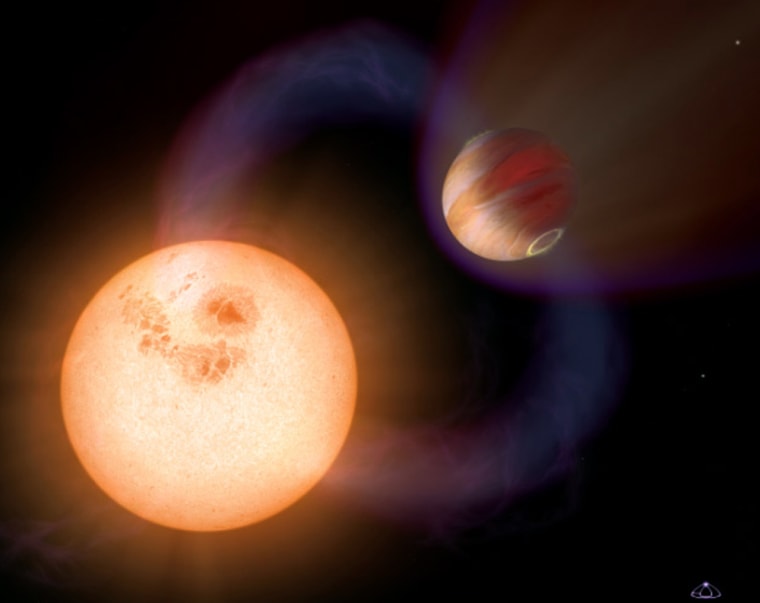A recently spied planet orbits so close to its star that a new year comes every 10 hours.
Called SWEEPS-10, the planet belongs to a newfound class of zippy exoplanets called ultra-short-period planets that have orbits of less than a day.
The Hubble Space Telescope recently spotted five ultra-short-period planets, all about the size of Jupiter, in a crowded star field near the galactic bulge of our Milky Way galaxy as part of an exoplanet survey called the Sagittarius Window Eclipsing Extrasolar Planet Search, or SWEEPS. A total of 16 planet candidates were found, all with relatively short orbital periods.
"These are the farthest planets detected so far around some of the faintest stars," study leader Kailash Sahu of the Space Telescope Science Institute in Maryland told reporters at a NASA press conference.
Extrapolated to the entire galaxy, the Hubble results suggest the Milky Way contains at least 6 billion Jupiter-sized planets, researchers say.
The findings are detailed in Thursday's issue of the journal Nature.
The new planets were discovered using the transit technique, in which researchers calculate a planet's mass and size based on the periodic dimming of starlight the planet creates when it passes in front of its parent star.
Previously, the shortest known orbital period for a planet was 1.2 days and belonged to a "hot Jupiter," a giant gas planet that also orbited close to its star. In our solar system, Mercury is the closest planet to our sun and has an orbital period of 88 days. Earth, located farther away, takes about 365 days to make one full orbit.
Unlike with hot Jupiters, the stars around which ultra-short-period planets orbit are small. The star that SWEEPS-10 orbits has less than half the mass of our sun. The stars' small sizes are likely what allow the planets to orbit so close, the researchers say. Planets orbiting larger stars at such close ranges would be destroyed.
"If sunlike stars have this kind of planet close to the star, it would simply evaporate the planet," Sahu said.

SWEEPS also confirmed something that astronomers have long suspected: that stars rich in heavy elements like carbon and iron are more likely to have planets.
"We wanted to now if this holds halfway around the galaxy," said study team member Mario Livio, also of the Space Telescope Science Institute. "We found that indeed, it does hold. If you find a star rich in heavy elements, there's a high probability that there will be a planet around it."
Alan Boss, a planet expert at the Carnegie Institution of Washington who was not involved in the study, said the new findings underscore the fact that the three types of planets found in our solar system — rocky planets, ice giants and gas giants — also appear to be abundant in the universe at large.
"We know that all three examples are out there, and that gives us great hope for the future of the field," Boss said.
